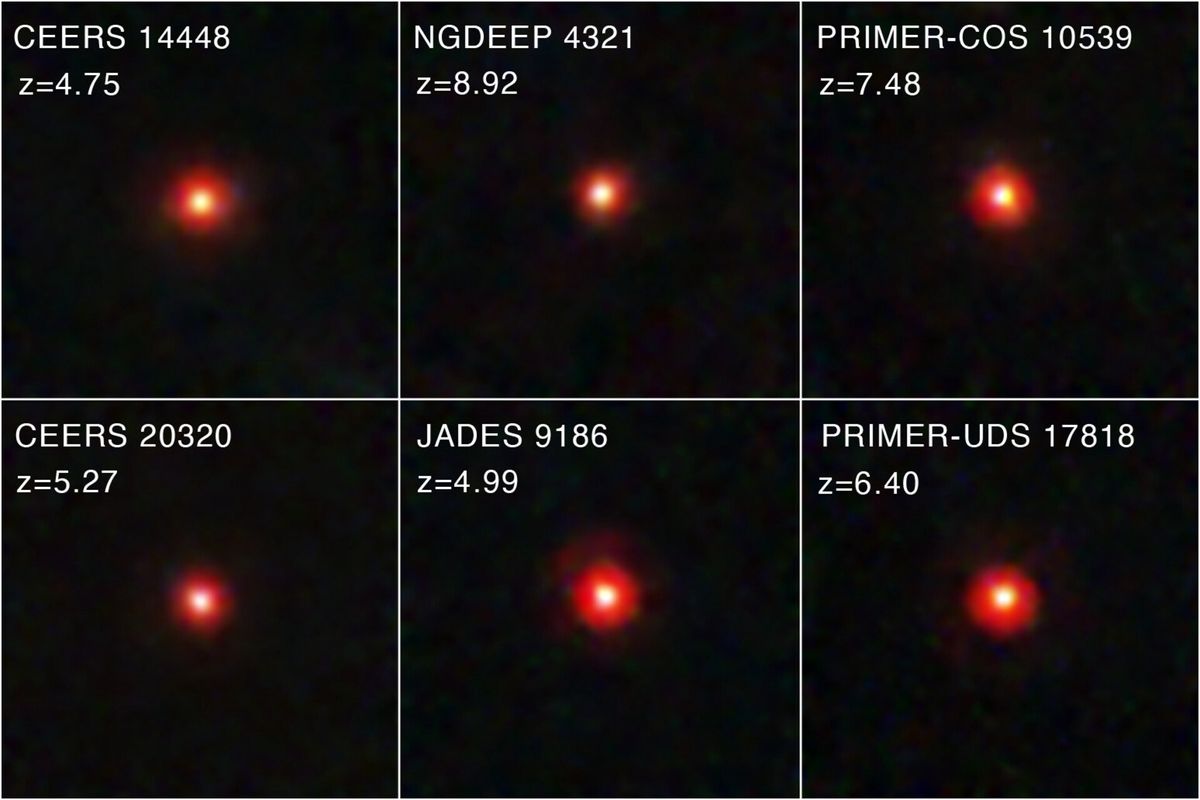Follow us on Google News (click on ☆)
Classical quasars, active galactic nuclei consisting of active black holes, are known for their extreme brightness. Their detection is facilitated despite the presence of surrounding dust. However, a new category of objects, named 'Little Red Dots,' has recently been identified.

Six images from James Webb showing 'Little Red Dots' in the early Universe. Astronomers are working to understand how these objects differ from traditional quasars.
Credit: NASA, ESA, CSA, STScI, D. Kocevski (Colby College)
These 'Little Red Dots,' smaller and less luminous than classical quasars, are often obscured by large amounts of dust. Their discovery has raised questions about their relationship with traditional quasars and the diversity of active galactic nuclei in the young Universe.
An international team used the James Webb Space Telescope to re-examine unknown objects spotted by the Subaru Telescope in Hawaii. Their analyses confirmed the presence of fast-moving gas, betraying the influence of supermassive black holes. These results, published in arXiv, suggest the existence of an intermediate population of quasars.
Out of 13 galaxies studied, 9 showed clear signs of this new population of active black holes. Yoshiki Matsuoka, associate professor at Ehime University, expressed surprise at the abundance of these obscured quasars in the early Universe. This discovery could fill the gap between classical quasars and 'Little Red Dots.'
Jorryt Matthee from the Institute of Science and Technology Austria highlighted the quality of the obtained light spectra, confirming the activity of supermassive black holes. Although the number of new objects is high, it is not entirely unexpected, given the gap between the two known populations.
What is a quasar?
A quasar is the extremely luminous core of a galaxy, powered by a supermassive black hole. These objects are among the brightest in the Universe, emitting light that can outshine their host galaxy.
Quasars form when large amounts of matter fall into a supermassive black hole, creating an accretion disk. This process releases tremendous energy in the form of light and radiation, making quasars visible at cosmic distances.
Although quasars have been known since the 1960s, their study continues to reveal surprises. Recent observations from the James Webb Telescope have shed light on an unexpected diversity among these objects.
How is James Webb revolutionizing astronomy?
The James Webb Space Telescope, launched in 2021, is designed to observe the Universe in infrared. This capability allows it to see through dust clouds and study the oldest and most distant objects.
Thanks to its unprecedented sensitivity and resolution, James Webb can detect galaxies and quasars that were previously invisible. Its observations help astronomers understand how the first galaxies and black holes formed and evolved.
The telescope also plays a key role in solving cosmic mysteries, such as the nature of 'Little Red Dots.' By combining its data with that of other telescopes, it provides a more complete view of the early Universe.